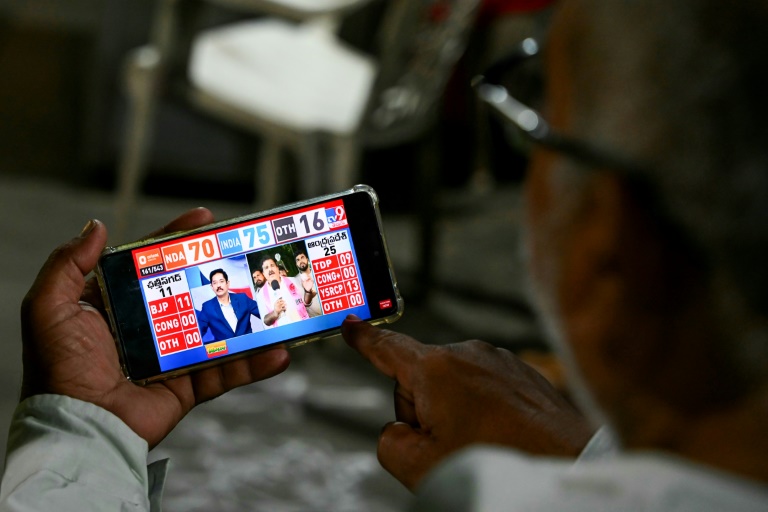India’s six-week election has been staggering in its scale and logistical complexity, but also in the “unprecedented” scale of misinformation online.
The largest democratic exercise in history has led to a wave of fake social media posts and instant messages, ranging from doctored videos to unrelated images with fake captions.
Raqib Hameed Naikof the US-based India Hate Lab said it had “witnessed disinformation on an unprecedented scale” during the elections.
“Conspiracy theories…have been vigorously promoted to deepen community division,” said Naik, whose organization studies hate speech and misinformation.
With seven stages of voting spread over six weeks, AFP fact-checkers conducted 40 election-related debunkings across India’s political divides.
There were fake videos of Bollywood stars supporting the opposition, as well as others purporting to show a person voting multiple times.
Some were rude or mocking.
Others were far more sinister and sophisticated productions deliberately intended to mislead.
All were widely shared.
– “Fear and animosity” –
Prime Minister Narendra Modi’s Hindu nationalist Bharatiya Janata Party (BJP) has been criticized for posts stoking sectarian tensions with India’s minority Muslim community, which numbers more than 200 million people.
These included numerous videos, matching Modi’s inflammatory campaign speeches, falsely claiming that his opponents were planning to redistribute India’s wealth in favor of Muslims.
Naik said such messages “aimed to stoke fear and animosity towards Muslims in order to polarize voters along religious lines”.
“The ruling party’s strategy of exploiting religious sentiments for electoral purposes has not only undermined the integrity of the democratic process, but has also sowed dangerous seeds of division and hatred in society,” he said. -he declares.
Fake news was detected across the political spectrum, but opposition Congress party leader Rahul Gandhi was one of the main targets.
His statements, videos and photographs have been shared on social media, but often incomplete or out of context.
A digitally altered video analyzed by AFP used Gandhi’s real boast that the opposition alliance would triumph, but reversed it to say Modi would win a third term when the result was declared on Tuesday.
Others claimed to show Gandhi falsely calling on people to vote for Modi.
Among the most egregious examples are those that falsely link it to India’s rival neighbors Pakistan and China.
Among these was a photograph claiming that Gandhi held up the “Chinese constitution” at an election rally. It was in fact that of India.
Other articles portrayed Gandhi, a Hindu, as opposed to India’s majority religion, capitalizing on Modi’s efforts to portray himself as the country’s strongest defender of the faith.
A video of a ruined Hindu temple, a real image of Pakistan, has been widely shared.
However, the post falsely claimed that it came from Gandhi’s constituency and was responsible for its destruction.
Another manipulated video falsely showed him refusing to accept a statue of a Hindu god.
Another claimed he was paying young people to support him on social media, when in reality he was talking about youth unemployment.
They were all widely shared by BJP supporters.
– Loss of trustworthy –
While political parties across the board have well-oiled digital outreach and social media teams, critics said the BJP’s sophisticated online campaign was generating posts.
Gandhi claimed that huge sums had been “spent to distort my image” and blamed Modi’s party.
However, opposition parties are also spreading misinformation targeting the BJP and glorifying the Congress.
Several digitally manipulated videos of two Bollywood actors criticizing the BJP and calling on the public to vote for the Congress party have been released.
Social media users also shared an old video falsely accusing the ruling party of tampering with an electronic voting machine to rig the elections in its favor.
“Overall, trust in the content itself is declining,” said Joyojeet Pal, an expert on the role of technology in democracy at the University of Michigan.
Pal told AFP that Indian social media users largely understood the prevalence of misinformation and falsified content during the election.
“So there’s a very good chance that they don’t believe the falsified content is real,” he said.
“However, there’s a good chance they’ll pass them on anyway because they align with their beliefs.”
bur-pjm/gle/pbt/rsc


